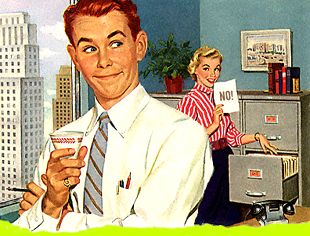
When I was a kid in the late '70s, I spent idyllic summers skateboarding down the hills of Albany, New York. I had a 27-inch G&S Fiberflex board with Road Rider 4 wheels and Bennett Hijacker trucks. If this doesn't mean anything to you, let's just say these were the high-performance elements that made my board a smooth, whisper-soft ride.
Jumping ahead 20 years, and west 3,000 miles, my dog Bo runs at my side as I blade down San Francisco's Embarcadero, a smooth promenade along the city's piers. It's rush hour and we keep pace with the cars that are pushing by to our left. A skateboard growls by, and Bo bolts into traffic. In utter panic, I yell and chase her, helpless now on my wheeled feet, as she tears along the dotted line between two packed lanes. Finally, she cuts clear across all six lanes and into a park on the other side, where she hides under a bench. I collapse in the grass beside her. Normally steady-as-she-goes, Bo heard the skateboard and freaked out.
So what the hell happened in that 20-year interim to make skateboards today so damn loud? The short answer is simple: smaller, harder wheels, which cause the familiar "rumble-clack-clack-rumble" that plagues canines and humans alike. Skateboard wheels had been growing progressively quieter since the late 1950s, when some kid first screwed his sister's roller skate wheels onto a piece of plywood to start the "sidewalk surfing" craze. This, according to Michael Brooke in The Concrete Wave: The History of Skateboarding, ushered in the first of four "waves" of skateboard popularity. The skates' metal wheels were loud, slow, and dangerous, and were quickly replaced by clay wheels, which weren't much better.
The Second Wave of skateboard history, my wave, began in the early '70s, when Cadillac introduced the urethane wheel that revolutionized the sport. The larger, softer wheel held the pavement for a smoother, surer, and nearly silent ride.
The '80s heralded the Third Wave. Wheels grew narrower, taller and lighter as riders performed more dangerous aerial maneuvers. The skate punk movement began, and Skateboarder magazine was replaced by Thrasher.
Skateboarding in the '90s, the Fourth Wave, has continued to be about grinding, thrashing, shredding -- about defying authority and gravity. Paradoxically, the sport has thrived economically like never before, thanks in large part to the popularity of the Extreme (now just "X") Games. Wheels have gotten as tiny as those of the First Wave, almost as hard, and hecka loud. Small for lightness' sake -- for ease in performing jumps called "ollies," -- hard for grinding (skidding), and both for speed. Loud wheels and gnarly scars have become as much points of pride as hitting the perfect trick.
My friend Tim Lockfeld, a former pro who still thrashes with some of my childhood heroes, told me that larger, more moderate resilience (softer) wheels were making a comeback. So, sans dog, I ventured down to the Embarcadero to have a listen. It was a windy gray day, and there were only about a dozen skaters out. I watched as rumpled, skinny boys hopped and scraped up and down benches, railings and other obstacles, catching themselves on hands and feet as boards skidded and clacked away. Every board had the same tiny, rumble-rasping wheels I'd come to resent so deeply.
So, while I haven't seen it, I can still dream of the day when larger, softer wheels will herald the Fifth Wave, and guys like me will be skaters reborn, surfing smooth and silent into our golden years. I envision senior skaters, faithful retrievers at our sides, whirring gracefully down the avenue on boards with shock absorbers, whitewall wheels, and cruise control. But just in case it goes the other way, I'm teaching Bo a few x-treme moves of her own. Sic 'em, girl!
Jamie Berger writes, acts, and provides telephone reference at the San Francisco Library. He once did a full 720, but no one was watching.
